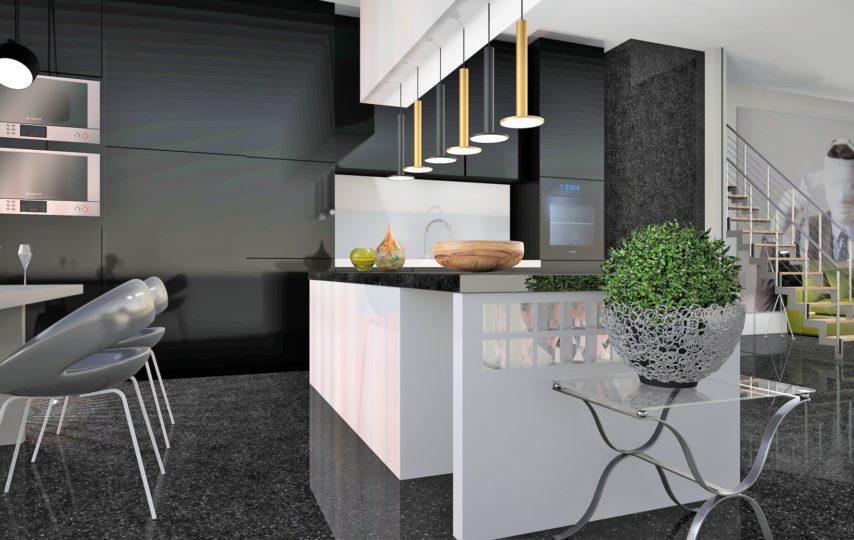Planning to switch to an LED lighting solution?
LED lighting became the popular choice among homeowners and business owners. LED lighting provides many benefits, not only for energy efficiency but also to health. If you haven’t yet made the switch, you may be wondering about the benefits of LED lighting.
This article lists some of the most surprising benefits of LED lighting. Read on and discover how LED dimmers lights can improve your quality of life:
1. Longer-Lasting Lifespan
LED lighting products have a different definition of useful life compared to others. In typical situations, LEDs won’t burn out or fail. Instead, the LED’s brightness will become dimmer as time passes.
Its components give it the durability and energy efficiency to outlast incandescent bulbs. A typical LED lightbulb will have a 35,000 to 50,000-hour lifespan. Regardless of how you use your lighting, its lifespan won’t decrease.
Other bulbs burn out because of weakened internal components. The filament often sustains the most damage. However, LED lights only experience dimness.
This means it can last longer than the lifetime hours specified on the box.
If you buy the cheaper LED bulbs, expect them to last for about 5,000 hours. Even then, it still offers 3,000 hours more than the average incandescent bulbs. It gives you the most value out of your investment.
2. Energy Efficiency
LEDs have higher lumen output per watt. It enables them to convert around 70% of their energy into light. It makes them more energy efficient compared to other bulbs.
An incandescent bulb will waste a lot of energy since they turn it into heat instead of light. To compare, a 6-watt LED bulb can make the same bright light as a 40-watt incandescent one. At the same time, it makes less heat, making them safer.
Some incandescent bulbs can become too hot and cause burns. Incandescent bulbs are best kept away from children or other flammable materials. The heat coming from the bulb can make curtain fabric burn.
You can help the environment by switching out a 60-watt bulb with an LED light. You’ll reduce your home’s CO2 emissions by 160kg per bulb each year.
3. Higher Brightness and Intensity
LEDs can emit higher levels of brightness. Nowadays, people use lumen output to determine a bulb’s brightness instead of wattage.
When comparing three 40-watt bulbs of various types, LED is the brightest at 4,000 lumens. Fluorescent bulbs take second place at 2,400 lumens. Incandescent bulbs are at the bottom since they have a meager 400-lumen output.
These figures show the clear winner when it comes to brightness. It means using LEDs will help you see better when there’s little to no natural light source.
4. Remarkable Range of Colors
Incandescent bulbs use gels or filters to achieve various colors and light shades. LEDs don’t need these to achieve the same. It’s also more reliable since gels and filters will either burn out or fade as time passes.
LEDs use either their actual diode or phosphorus coating to change their light color. If you want color consistency, you can rely on LED bulbs. It will sport the same color shade until the end.
5. Lower Radiated Heat
As stated above, incandescent bulbs can get too hot. It’s because it heats its filament to reach a temperature that makes light. The brighter the bulb, the more heat energy it requires.
LED bulbs turn energy into light instead of heat. It allows them to operate without heating too much. When electrified, they emit electromagnetic energy as light.
When LEDs generate heat, it dissipates because of its heat sink. The absorbed heat gets dispersed from the diodes using this component. Your fixture might feel warm, but the light coming from LEDs won’t.
This benefit makes them great for areas sensitive to heat. For example, art galleries use LED lights because they won’t damage the paints and dyes of their exhibits. The paintings will remain vibrant for a long time.
The method LEDs dispel heat comes with a minor drawback for some designs. If you keep these in enclosed spaces, their lifespan will shorten. Check your bulb’s specifications to discover whether these restrictions exist.
6. Reliable and Instant Lighting
LEDs can function even when operating in colder climates. They can resist impact and vibration compared to other bulb types. They have no filaments and other fragile components.
With this stability, LEDs are ideal if your area’s temperature fluctuates. It’s also perfect for areas experiencing inclement weather.
LEDs also light up immediately, unlike fluorescent lights. The latter will take a few moments to warm up and get brighter. The former operates at full brightness as soon as you flip the switch.
7. Light Similar to Sun with Less UV Rays
Some LED lights are adjustable to imitate sunlight. It’s one of the greatest health benefits of LED lighting. If you live in an area where sunlight isn’t as prevalent, LED lighting is a great solution.
Some horticulture businesses use LED grow lights to grow plants indoors. These bulbs are customizable to become the right colors that promote growth. Some experts say that plants grow faster than other grow light options.
Ultraviolet rays can be harmful to your health. Exposure to high levels of UV rays can result in sunburns, eye damage, and skin cancer. LED lights are safer since their internal phosphors convert UV rays into white light.
To make the most out of your LED investment, it’s better to get something fancy like wall lamps. If you’re interested, check out https://www.interior-deluxe.com/ for more luxurious fixtures.
Discover More Benefits of LED Lighting Today
With these surprising benefits of LED lights, it’s hard to find a reason not to make the transition. It’s eco-friendly with its energy-efficient nature. What’s not to like?
Did this guide help you discover the benefits of LED lighting? If so, check out our other blog posts to find out the best way to incorporate LED lighting into your home.













